By Lisa Hix, Collectors Weekley
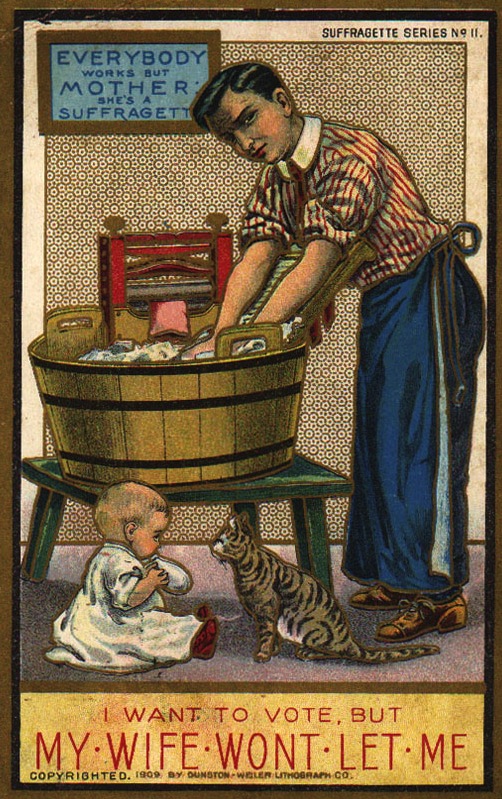
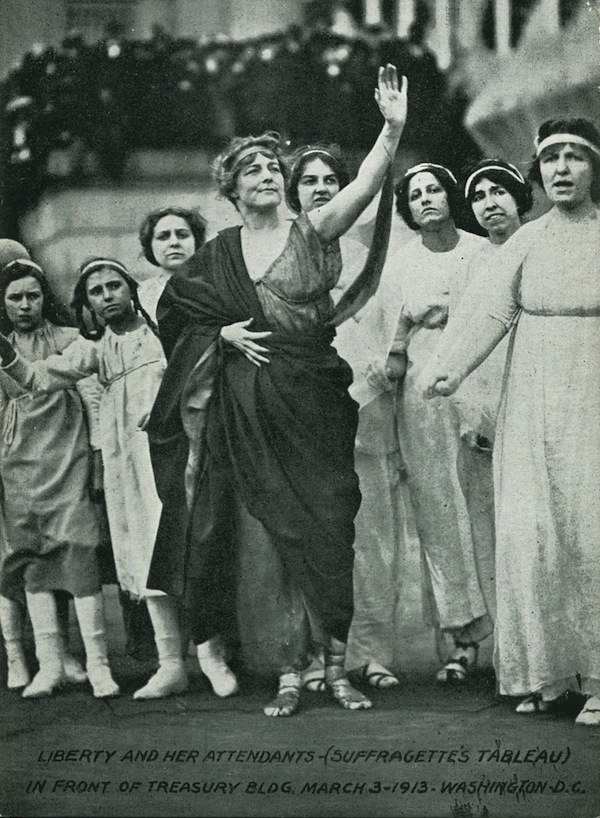
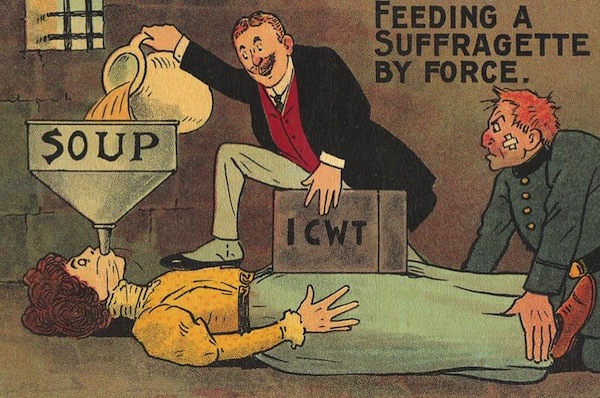
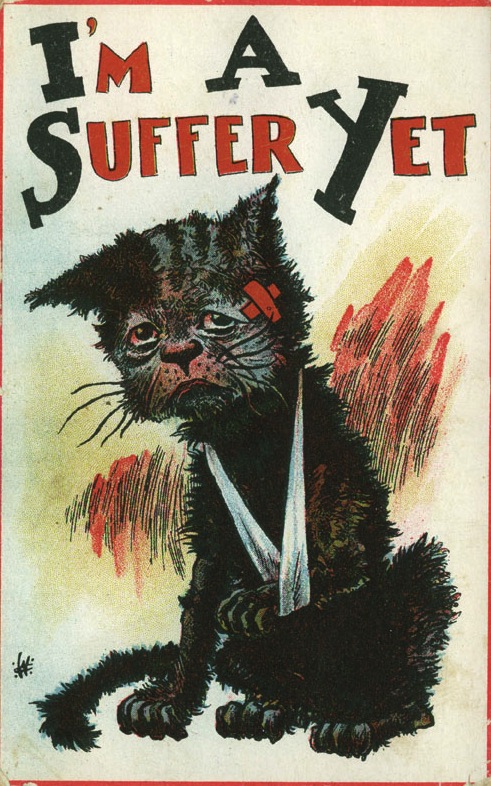

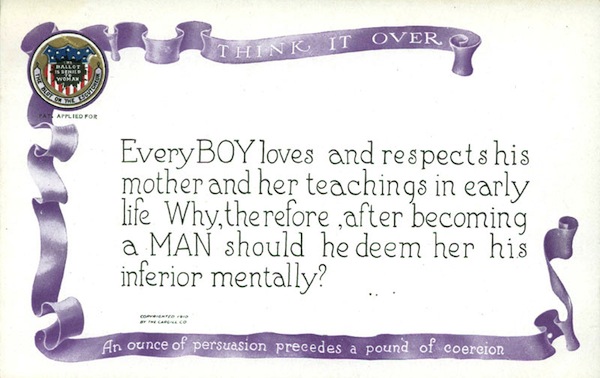

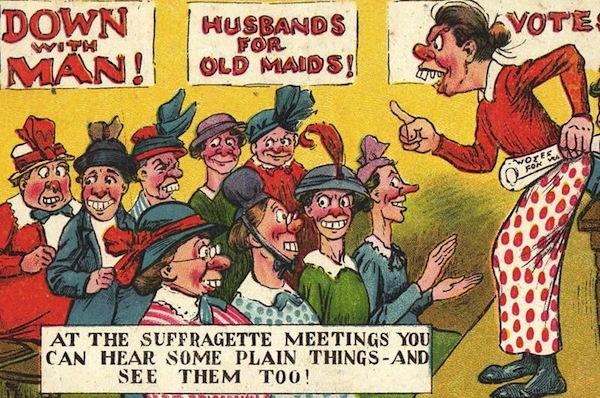

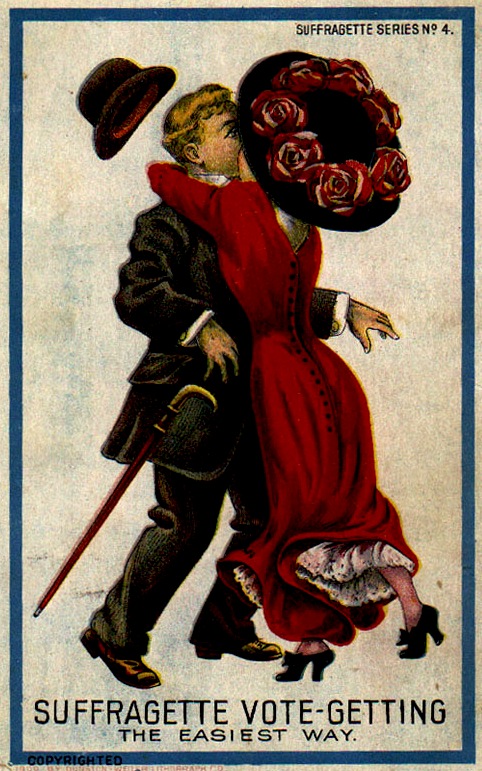
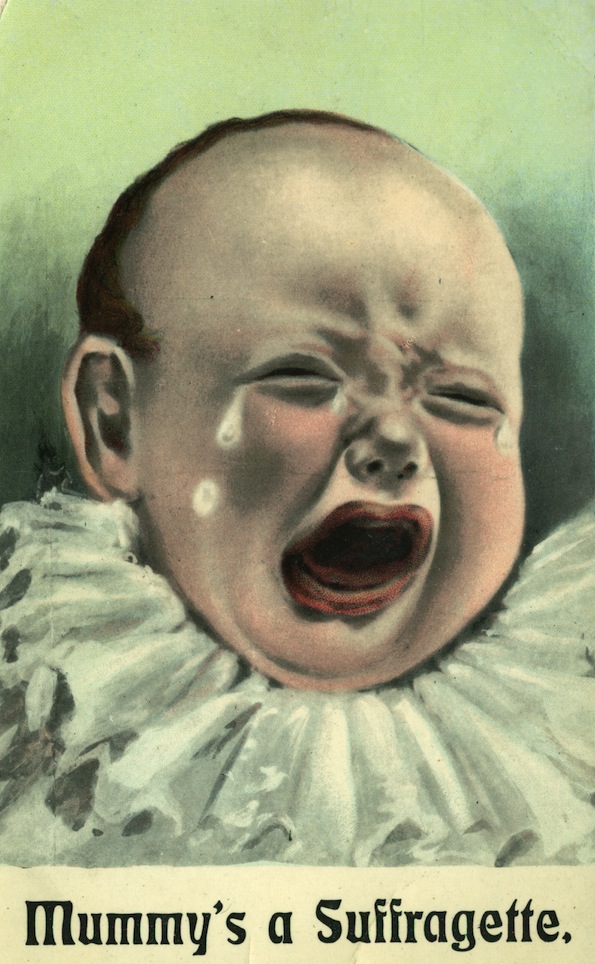
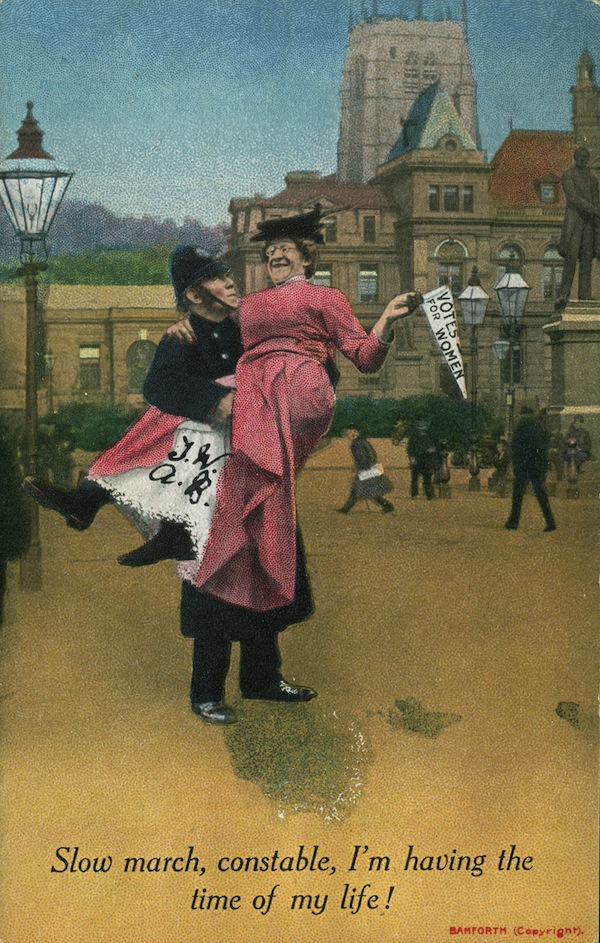
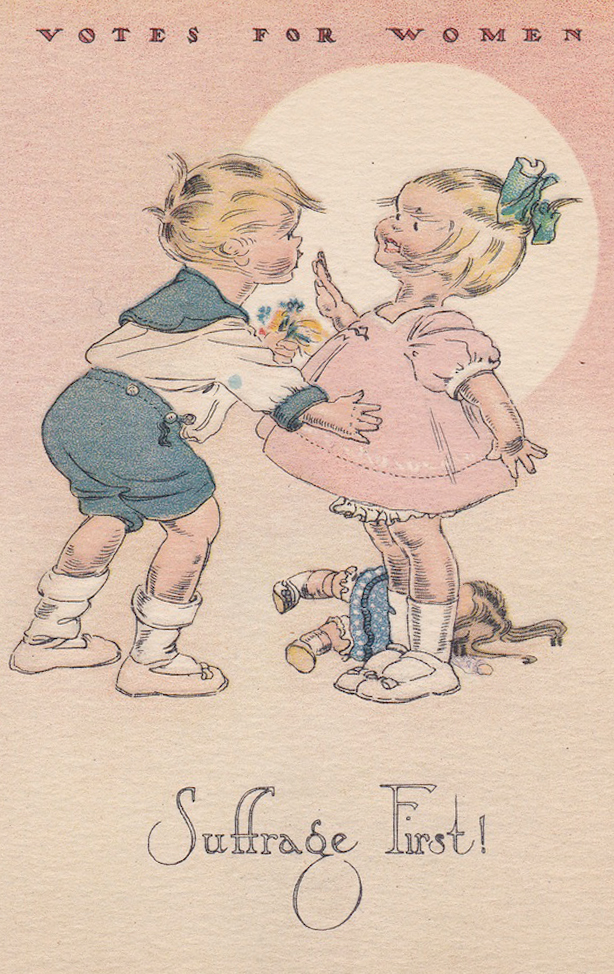

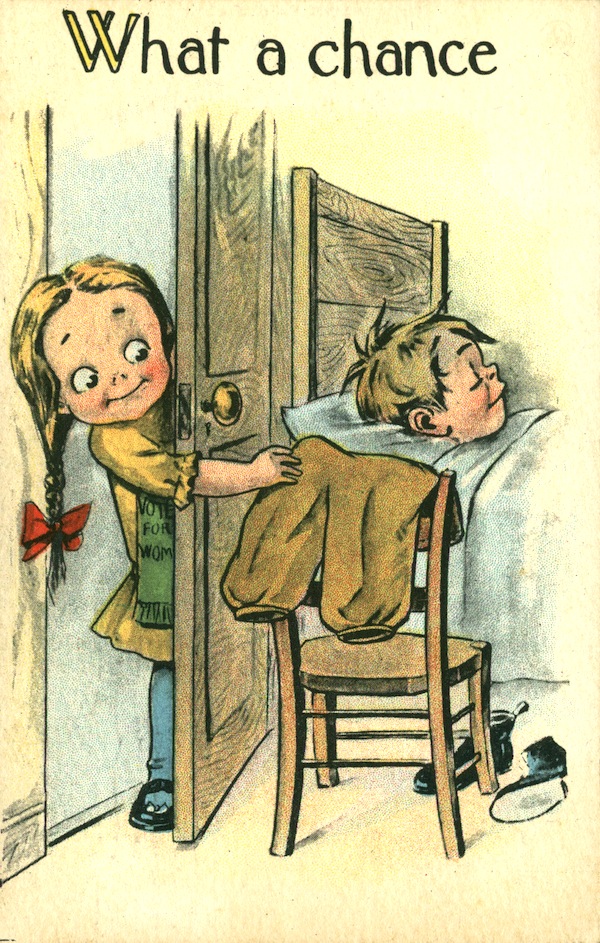
Check out Collectors Weekly for more interesting articles!
“Do hormones drive women’s votes?” That headline is not from a newspaper published in 1892 or 1922, but from CNN online in 2012. Posted just last week, the story survived all of seven hours, weathering ridicule from the blogosphere, before the news hub “determined that some elements of the story did not meet the editorial standards of CNN.”
“Do hormones drive women’s votes?” That headline is not from a newspaper published in 1892 or 1922, but from CNN online in 2012. Posted just last week, the story survived all of seven hours, weathering ridicule from the blogosphere, before the news hub “determined that some elements of the story did not meet the editorial standards of CNN.”
“Should women with school-age children work? Should men co-parent? We’re having the same debates.”
No kidding. Check out the lead: “There’s something that may raise the chances for both presidential candidates that’s totally out of their control: women’s ovulation cycles.” This statement bears an uncomfortable similarity to the early 20th-centurypostcards opposing the right of women to vote. One hundred year later, women may well influence the outcome of the U.S. presidential election. According to New York Times statisticianNate Silver, the gender gap is as wide as it’s ever been. His math shows that if only women voted, Democratic President Barack Obama would crush Republican challenger Mitt Romney; whereas if only men voted, Romney would easily defeat Obama.
Here’s another fact that may astonish you: In the United States, most women haven’t even had the right to vote for 100 years. The 19th Amendment only passed in 1920, a mere 92 years ago. And suffragists, as advocates for women’s voting rights were known, spent nearly that long—more than 80 years—pushing the cause.

Top: A little boy reprimands a young suffragist for ignoring her dolls in this U.S.-made card marked “BS.” Above: In 1909, the Dunston-Weiler Lithograph Company of New York issued possibly the most beautiful set of 12 anti-suffrage cards ever. Palczewski, Catherine H. Postcard Archive. University of Northern Iowa. Cedar Falls, IA.
Lucretia Mott, from Philadelphia, blazed the trail in 1840 when she attempted to lead a delegation of women to the World Anti-Slavery Convention in London, where her group was denied seats. She then got together with Elizabeth Cady Stanton to host the first American woman suffrage convention in 1848 in Seneca Falls, New York, which led to a pro-suffrage statement called “The Declaration of Sentiments.”
“Mobs overwhelmed the parade route, spitting and yelling at the women. The police didn’t hold the mobs back.”
Most suffragists were also involved in campaigns to abolish slavery, and so the crusade for women’s right got put on hold, particularly during the Civil War. But when the 15th Amendment gave black men, but no women, the right to vote in 1869, Stanton felt thwarted. So she joined with Susan B. Anthony and formed the National Woman Suffrage Association, which merged with another group to become the National American Woman Suffrage Association (NAWSA) in 1890.
“When the amendment was passed to give rights to black men, former slaves, Anthony and Stanton were incredibly frustrated by this,” says Catherine H. Palczewski, a professor of women’s and gender studies at University of Northern Iowa, Cedar Falls. “That’s where the racist component of the suffrage campaign comes in. Stanton and Anthony did not support black male suffrage unless women were also given the right to vote. They were also frustrated that the 15th Amendment was one of the first legal documents that made it clear that only men had the full rights of citizenship, including voting, and one of the first places where hard-and-fast distinctions between men’s and women’s rights got enshrined.”

The women who participated in this 1913 pro-suffrage march on Washington, D.C., were yelled at and spat upon by an angry mob. Palczewski, Catherine H. Postcard Archive. University of Northern Iowa. Cedar Falls, IA.
The Wild West, as it turns out, tended to be more progressive in this matter. Decades before they even became states, the territories of Wyoming and Utah gave women the right to vote in 1869 and 1870, respectively. The states of Colorado and Idaho granted women the right to vote in 1893 and 1896.
In the United Kingdom, Parliament began to politely ignore the matter of women’s voting rights in the mid-1800s, when pressed by Millicent Fawcett and her National Union of Women’s Suffrage Societies (NUWSS). It wasn’t until Emmeline Pankhurst and her daughter Christabel founded the radical, militant group called the Women’s Social and Political Union (WSPU) in 1903 that anyone began paying attention. For the next 11 years, these “Suffragettes,” as they were dubbed in the press, declared war on the British government, breaking windows, chaining themselves to railing, and on occasion, setting off bombs.

Starting in 1909, imprisoned Suffragettes going on hunger strikes were often force-fed by their jailers, a form of torture that made them ill. Some even died from it. Copyright June Purvis.
“The Suffragettes said, ‘Deeds not words,’” says June Purvis, a professor of women’s and gender history at the University of Porstmouth, United Kingdom, whose collection was featured onBrain Pickings this summer. “They used a lot of legal tactics like campaigning to Parliament, putting up posters, and speaking at meetings. And they also engaged in a lot of illegal tactics, like destroying postboxes, cutting telephone wires, and setting fire to empty buildings. But the aim was never to kill anybody.”
When arrested, Suffragettes would go on hunger strikes. Often, they were force-fed in prison, a form of torture that often made them ill and even killed some. To save face, the British government passed the Prisoner’s Temporary Discharge of Ill Health Act (commonly called “The Cat and Mouse Act”) in 1913, which released women when they were ill to die outside of jail. If they recovered, they could be re-arrested.

The 1913 British law known as “The Cat and Mouse Act” released Suffragettes who were sick from the force-feeding so they could recover (or die) at home. Once the women were well again, they could be re-arrested. Palczewski, Catherine H. Postcard Archive. University of Northern Iowa. Cedar Falls, IA.
World War I in 1914 forced England and the Suffragettes into a truce, and after the war, property-owning women over the age of 30 were granted the right to vote in 1918. It wasn’t until 1928 that all women over the age of 21 received the right to vote in the United Kingdom.
“They were depicted as very ugly women with big feet, protruding teeth, hair pulled back in a bun, and glasses.”
“The social pressures that resisted suffrage can’t be underestimated.” Palczewski says. “It wasn’t just that women had to fight for the right to vote, but women had to fight for the right to speak in public to be able to advocate for their own rights. The phrase ‘public woman’ actually referred to prostitutes. The assumption was, if you were out in public as a woman, unescorted, you were a prostitute. The battle for suffrage wasn’t just about the legal right to vote, but it was also about women’s ability to be public figures, not confined to the home. It was more broadly about women’s role in society.”
Inspired by the WSPU in England, Alice Paul helped organize a 1913 national pro-suffrage parade in Washington, D.C., the day before Woodrow Wilson’s inauguration. At the time, women asserting First Amendment rights to assemble peaceably was considered radical.

A woman dominates her husband in this Bamforth postcard. Palczewski, Catherine H. Postcard Archive. University of Northern Iowa. Cedar Falls, IA.
“Mobs overwhelmed the parade route, spitting, yelling, and assaulting the women,” Palczewski says. “The police didn’t hold the mobs back. The Secretary of War, Henry Stimson, ended up having to call in the cavalry from a nearby military base to clear the route so the parade could finish. This made national headlines, such as ‘Hooligans Vs. Gentlewomen,’ and even the New York Times, who were not kind to woman suffrage, covered the parade as a moment where civil society had failed women. One news story quoted an officer as yelling, ‘If my wife were where you are now, I’d crack her head open.’ It was a turning point in the PR campaign.”
In 1916, Paul left the NAWSA to form the more militant National Woman’s Party in the United States. Like her British contemporaries, she was also put in jail, where went on a hunger strike and was force-fed eggs through a feeding tube.

A large set of motto postcards was published by the National American Woman Suffrage Association itself in 1910. Palczewski, Catherine H. Postcard Archive. University of Northern Iowa. Cedar Falls, IA.
The response was extreme, but at the time, the U.S. Suffragists and U.K. Suffragettes were upending wide-held social mores. Victorians firmly believed in the concept of “separate spheres,” meaning men were more naturally suited for the public life of politics, law, higher education, and business, while women were meant for the private life, dealing with domestic matters like maintaining a home, raising children, and upholding religious piety.
These sentiments, particularly the priority and sanctity of motherhood, are still echoed by politicians today, from First Lady Michelle Obama’s declaration that her most important role is “Mom-in-Chief” to Republican presidential challenger Mitt Romney’s anecdote about how, as Massachusetts governor, he let his female chief of staff go home early to make dinner for her kids. President Barack Obama talks about the sacrifices his single mother made for him, while Romney champions the ideal of the two-parent home, where husbands and wives adopt traditional gender roles.

The women here are smoking, playing poker, and eating chocolate while the man cleans and tends to the baby. Palczewski, Catherine H. Postcard Archive. University of Northern Iowa. Cedar Falls, IA.
Of course, at the turn of the century, no one had Facebook, TVs, or radios, and very few people had telephones, so the hot new medium for expressing ideas were cheap color-lithographed postcards, which had their Golden Age between 1893 and 1918 when the postage was pennies. Thus, postcards became the favored method for anti-suffragists to mock feminists and assert the status quo. It’s estimated that 4,500 different designs addressing suffrage were produced.
“There were two types of postcards primarily,” Purvis says “The suffrage societies themselves produced their own postcards, which were mainly photographs of the leaders. But the bulk of the postcards were commercial comic postcards making fun of the Suffragettes.”

A gathering of unattractive spinsters plots against men in this British postcard. Copyright June Purvis.
The messages you find on anti-suffrage postcards from the 1910s are not dissimilar from what you might hear from Rush Limbaugh or Bill O’Reilly today in the 2010s. Suffragettes were drawn as conniving coquettes, ugly, mean spinsters or, worse, ugly, mean wives who left their families helpless as they attended town-hall meetings. Scenes of women politicians showed them hatching diabolical plots to undermine and emasculate men further. In England, particularly offensive cards took sadomasochistic delight in the force-feeding, while sympathetic cards depicted women as beat-up cats, referring to the Cat and Mouse Act.
“Married Suffragettes were depicted as nagging wives, that was a common one, and the wife was always big, and the husband tiny and puny,” Purvis says. “Or, if they were single, Suffragettes were depicted as very ugly women with big feet, protruding teeth, hair pulled back in a bun, and glasses. They were depicted as quite mannish and unattractive so that no man would want to marry them.”

Many postcards mocked “masculine women” who wanted to wear pants.
Naturally, it was assumed that giving women the right to vote would lead to other freedoms, which threatened to smash the separate spheres. Ironically, when men were shown the chores of child-rearing and housekeeping, these tasks were depicted as stressful, humiliating, and misery-making. “Manly” activities like voting, smoking cigars, attending meetings, and wearing pants looked dignified and invigorating, even as the smug Suffragettes partook in them. Why would women want to get stuck with all the dreary domesticity while men got to go out and have all the rights?
“That was a common theme, that if women were given political power they would crush men and upset the gender roles in society, particularly in the family,” Purvis says. “So if women got the vote, a woman could ask a man to marry her. If women got the vote, men would have to look after the children.”
Palczewski says these postcards are important records of history, revealing the zeitgeist of the time, very much like today’s online memes (such as the Romney-inspired Binders Full of WomenTumblr) that repeat the same ideas over and over. Several different images can be found for “Suffragette Vote-Getting” showing a woman kissing a man, or the “Suffragette Madonna,” depicting a saintly man holding a baby.

The 1909 Dunston-Weiler set is notable because the Suffragettes are depicted as attractive, but scandalously sexually available. Palczewski, Catherine H. Postcard Archive. University of Northern Iowa. Cedar Falls, IA.
“If you read the spoken discourse for and against suffrage, there are all sorts of arguments that women getting the vote will masculinize them and make them lose their feminine identity,” she says. ”But there’s not much about what women’s vote will do to men. But all over the postcards, there are these images of men being feminized. There’s stuff in postcards that you’re not going to find in other archives.”
At least, five motto postcards issued by the NAWSA talk about working women paying the same taxes as men, and therefore, deserving the same rights. But Palczewski says that in the United States, working-class women were not as much part of the movement as middle-class white women.

In anti-suffrage postcards, babies were usually crying for their absent mothers, or the women were depicted as whining babies. Palczewski, Catherine H. Postcard Archive. University of Northern Iowa. Cedar Falls, IA.
“What women are we talking about?” Palczewski says. “Slaves always worked, without pay. Poor women worked in factories. But the proof of a white man’s manliness was that his wife didn’t have to work. So in the U.S., suffrage was framed as a middle- and upper-class white woman’s struggle. What woman would see she could have been a captain of industry, lawyer, or politician if she were a man? White, privileged women saw that sex was the thing that was keeping them back. For women of color, poor women, immigrant women, it was a constellation of things that impacted their standing in society.”
While publishers mostly produced anti-suffrage comic cards, on occasion they made pro-suffrage cards, too. In “The Encyclopedia of Antique Postcards,” Susan Brown Nicholson explains that often postcard artists of the era would draw an image that would be used on both pro and con postcards. Nicholson says that you’re more likely to find pro-suffrage cards unused, possibly because the social climate of the time made it safer to keep these postcards or exchange them face-to-face. Palczewski says it’s more that some postcards could be read both ways, like the Bamforth postcard of a large, old woman being carried off by a police officer, his hands between her legs, and she’s saying “Slow march, constable, I’m having the time of my life!”

This particularly risque Bamforth card could be read as both pro-and anti-Suffragette. Palczewski, Catherine H. Postcard Archive. University of Northern Iowa. Cedar Falls, IA.
“At one level, the card is making light of the police brutality the suffrage protestors faced—because the police were incredibly violent toward them,” Palczewski says. “But on another level, it’s showing a suffrage protestor saying you can arrest me and carry me away, and I’m not going to be bowed down by that. The images could be read in very different ways.”
Illustration, as it turns out, was one of those rare occupations where middle-class women were allowed to have careers at the turn-of-the-century, especially if they were good at drawing cute and pretty things like big-eyed children, elegant ladies, and cuddly furry animals. At least one influential American illustrator of the day, Rose O’Neill, the quirky pants-loving creator of theKewpie, was an adamant suffragist. Others, like Ellen H. Clapsaddle, employed her large-headed children for both pro- and anti-suffrage Valentines cards. Cute kids were always popular in the Golden Era of postcards, but it’s possible the images of adorable children were depicted in suffrage cards to diffuse the intensity of the subject.

The National Woman Suffrage Publishing Co. circulated pro-suffrage cards designed by the Campbell Art Company, the same group of illustrators that produced the Campbell’s Kids. Palczewski, Catherine H. Postcard Archive. University of Northern Iowa. Cedar Falls, IA.
“Women have always been infantilized,” Palczewski says.”To reduce a woman to a child is a way to undercut her argument, to belittle it. It may be trying to minimize the power of a woman’s argument or to reduce a suffragist to just a whiny little girl.”
Some suffragists often played up the idea of separate spheres, too, suggesting that women voted from a higher moral authority as loving and religiously faithful mothers. Wide-eyed sex appeal, too, was wielded to gain power, as flirty little girls refused kisses from boys who wouldn’t let them vote.
“Frances Willard of the Temperance movement got very involved in suffrage, arguing that women were morally superior to men and that women would vote to pass Prohibition,” Palczewski says. ”There were two broad arguments for suffrage: The first is justice, that all citizens should be treated equally. But then there was the argument of expedience, that giving women the right to vote is good, because they’ll pass laws for child protection and Prohibition. But there was a women’s group called the Remonstrants that argued that women didn’t need the right to vote because they could exert political power was by influencing their men at home and working behind the scenes in social and civic organizations.

The “Suffragette Madonna” was a popular theme in anti-suffrage postcards. Palczewski, Catherine H. Postcard Archive. University of Northern Iowa. Cedar Falls, IA.
“Even when you hear some of the contemporary discourse about the conservative women who go into politics, when you listen to the Michele Bachmanns or the Sarah Palins, there are strong connections back to the arguments and ideologies of the Remonstrants. Should women with school-age children work? Who is the primary giver in the home? Should men co-parent? Yeah, we’re having the same debates.”
Now, in 2012, it’s possible the women’s vote could effect the outcome the U.S. presidential election. You would think we’d also have moved beyond gender stereotypes depicted in these postcards, but they’re still strong. In fact, in the past year, a lot of breathless articles have been passed around declaring “the end of men.” American women, it seems, have gone and reduced the male population to sniveling man-children, just by making small advances in academics and business.

Giving women the right to vote also meant that they might start wanting to wear pants, too. Palczewski, Catherine H. Postcard Archive. University of Northern Iowa. Cedar Falls, IA.
“We operate with this zero-sum mentality, which is, if women gain rights, men lose them,” Palczewski says. “You see the same sort of idea that if people of color or ethnic minorities make gains, whites therefore lose something. So if men only understand their identity in relationship to being bigger than women, then it’s a trade-off. You see it in dozens of anti-suffrage postcards, showing men being hurt if women advance. Human beings seem to operate with this mentality where if you expand the rights of some, it diminishes the rights of others, instead of collectively expanding the rights of all of us as a people.”
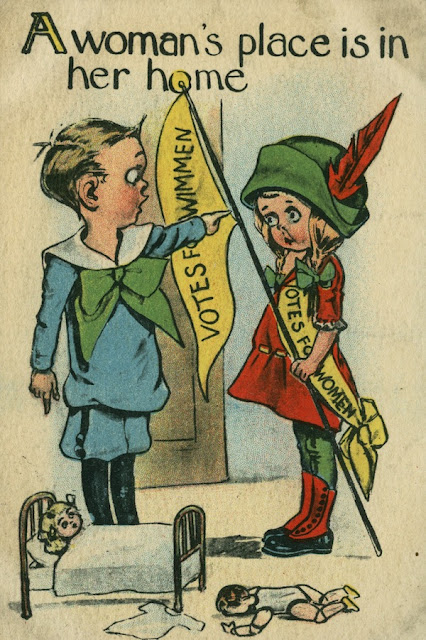
Comments
Post a Comment